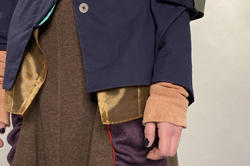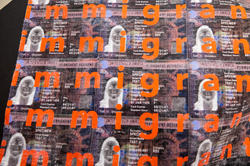With a live runway show out of the question, the Class of 2021 uses video to present their intimate and thoughtful work.
Challenging Fast Fashion
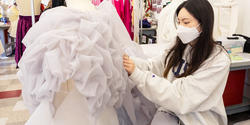
“Getting to show my work at Woods-Gerry was a dream,” says Apparel Design senior Teddy Smarz 22 AP as he drapes a swatch of pink jersey over a dress form. Smarz is one of 12 graduating seniors currently working full-tilt on their senior thesis projects who recently exhibited work in progress in an on-campus exhibition called Unfinished.
The Class of 2022 will also show finished garments at the end of the semester via short films to be screened in May, but the gallery exhibition clearly reflects the department’s shift in focus from outcomes to process. Department Head Lisa Z. Morgan explains the thinking behind RISD’s 2021 departure from its traditional Collection fashion show.
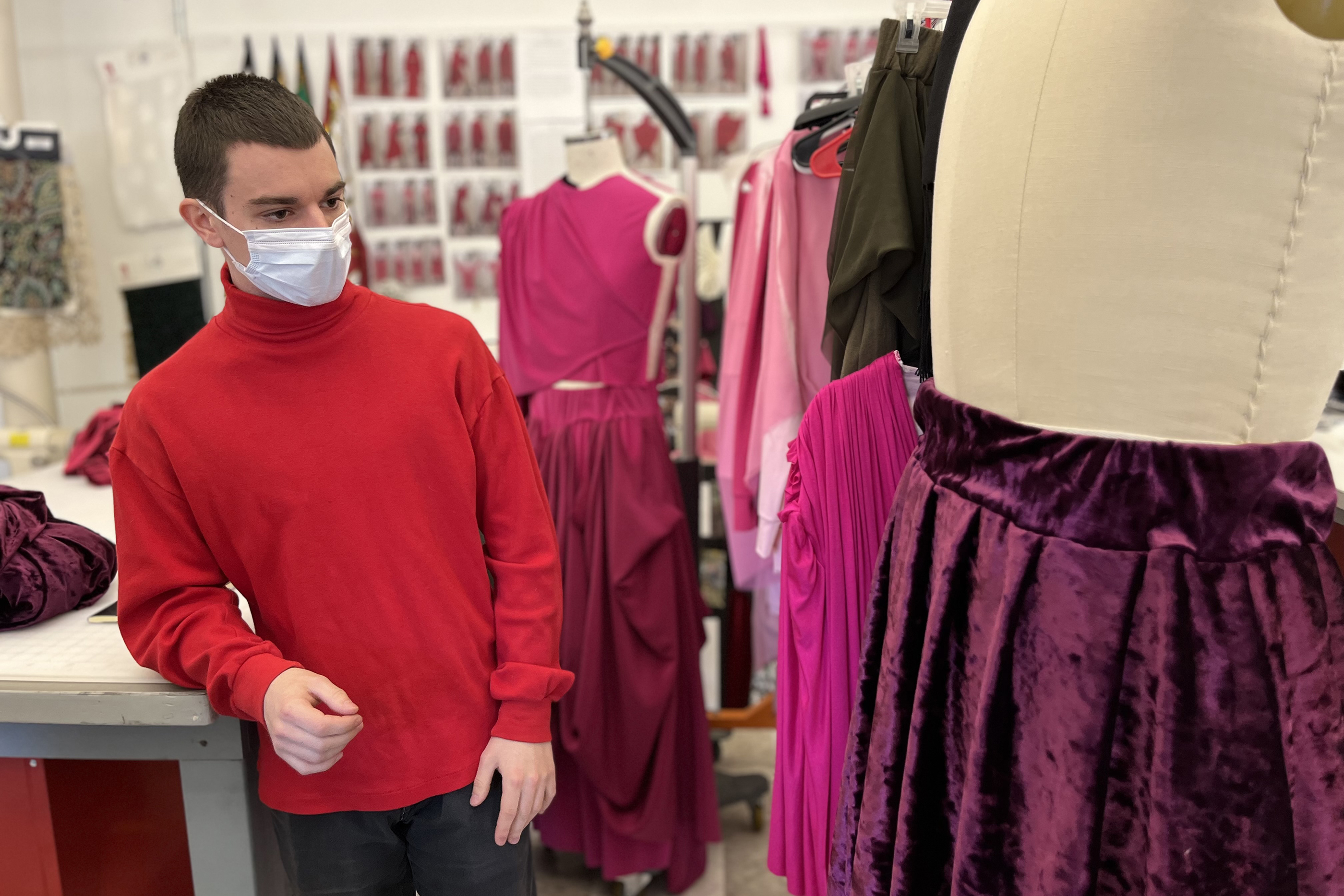
“A runway show sweeps you up in its theatricality, which is a wonderful experience,” Morgan says, “but you miss out on what’s fueling the designs—the conceptual development behind the outcomes.”
“A runway show sweeps you up in its theatricality, which is a wonderful experience, but you miss out on what’s fueling the designs.”
As landfills around the world are jam-packed with an estimated 90 million tons of textile and garment waste every year, RISD’s Apparel Design program is intentionally challenging the relentless cycle of fashion, slowing down to rethink and reinvent. “Some of the students are focusing on responsive design,” Morgan says, “working with garments and materials that already exist. Others, including Jun Yi Hu 22 AP and Emilia Mann BRDD 22 AP, are growing their own biomaterials, like mycelium.”
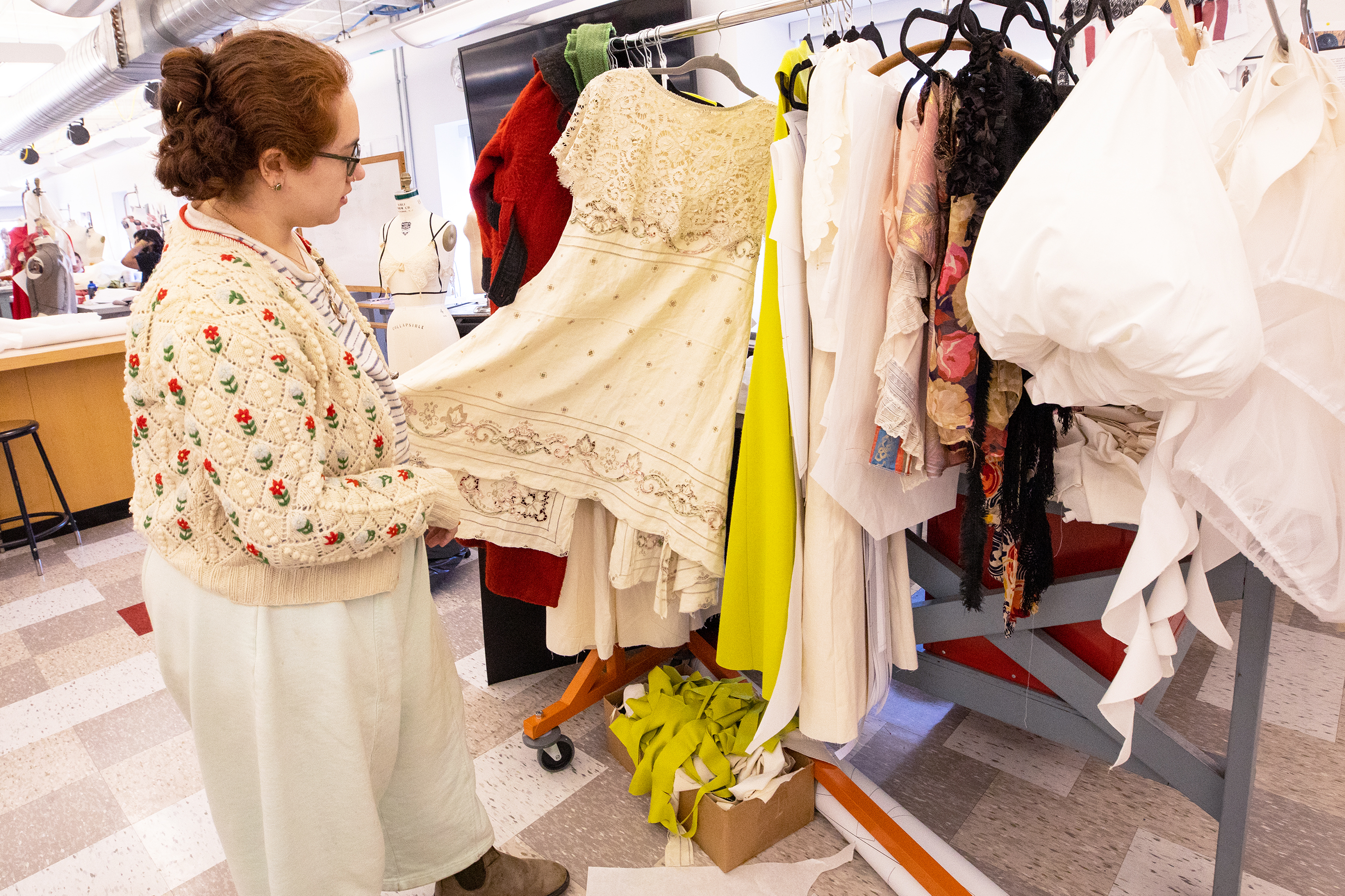
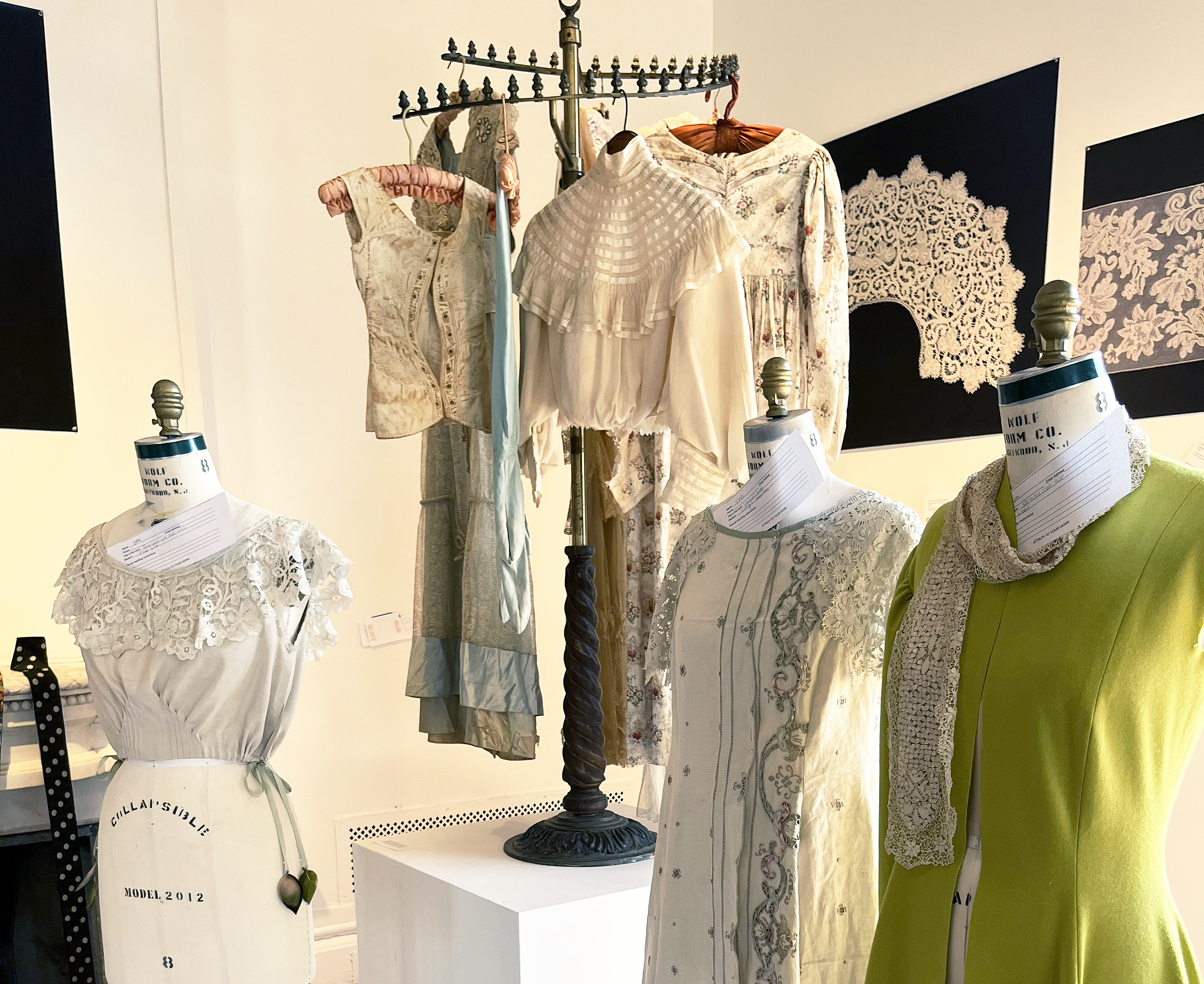
Entrepreneur Sofia Michaelides 22 AP—who runs her own vintage clothing business when she’s not designing womenswear—frequently utilizes antique textiles in her practice. She’s currently fabricating a dress for her thesis collection out of a turn-of-the-century tablecloth she purchased at auction.
“I will always be my own boss,” Michaelides responds when asked about her post-Commencement plans. “I just signed a lease on a new studio in [redeveloped Rhode Island textiles mill] Hope Artiste Village with big windows and lots of great natural light for photo shoots.”
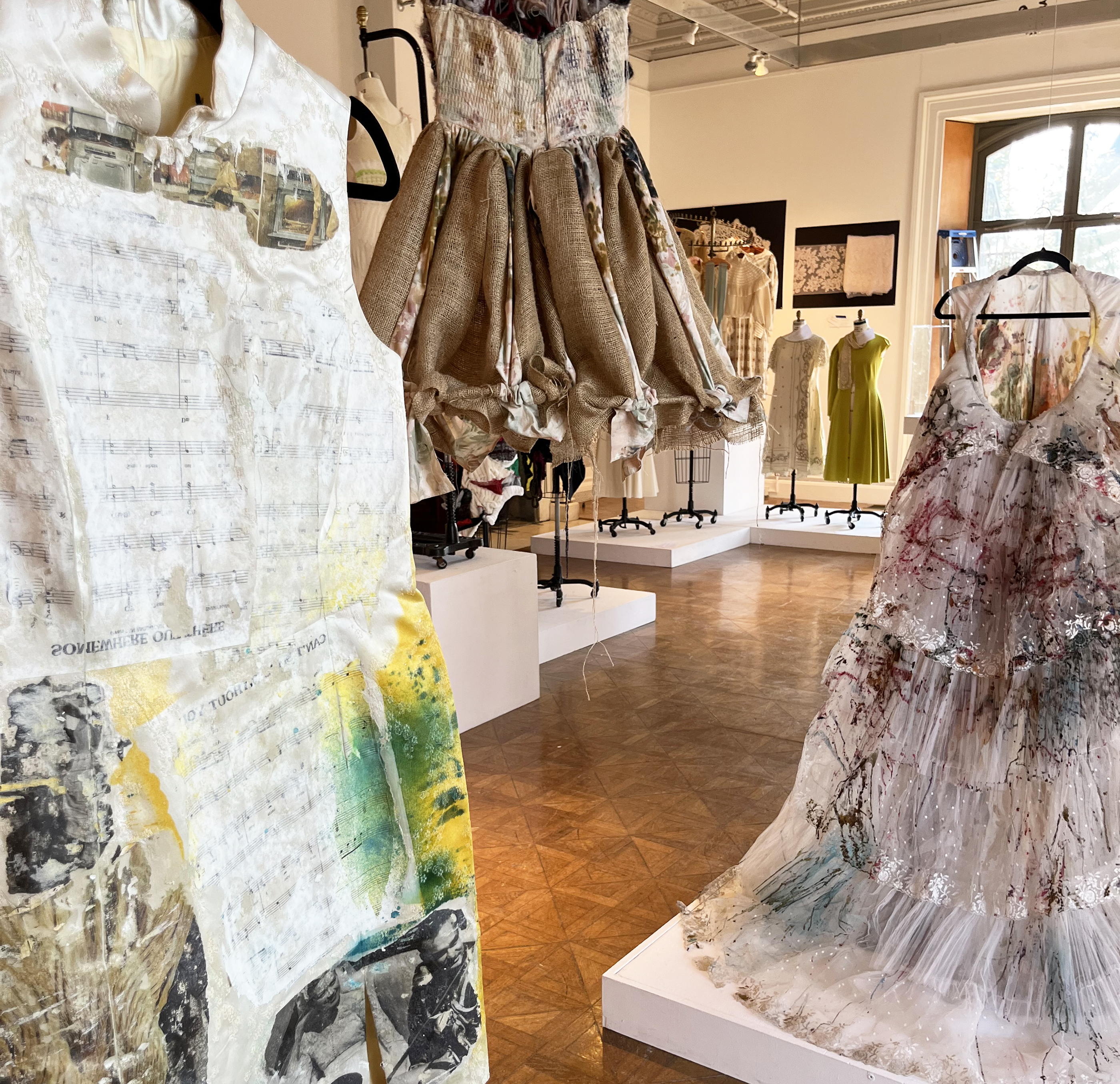
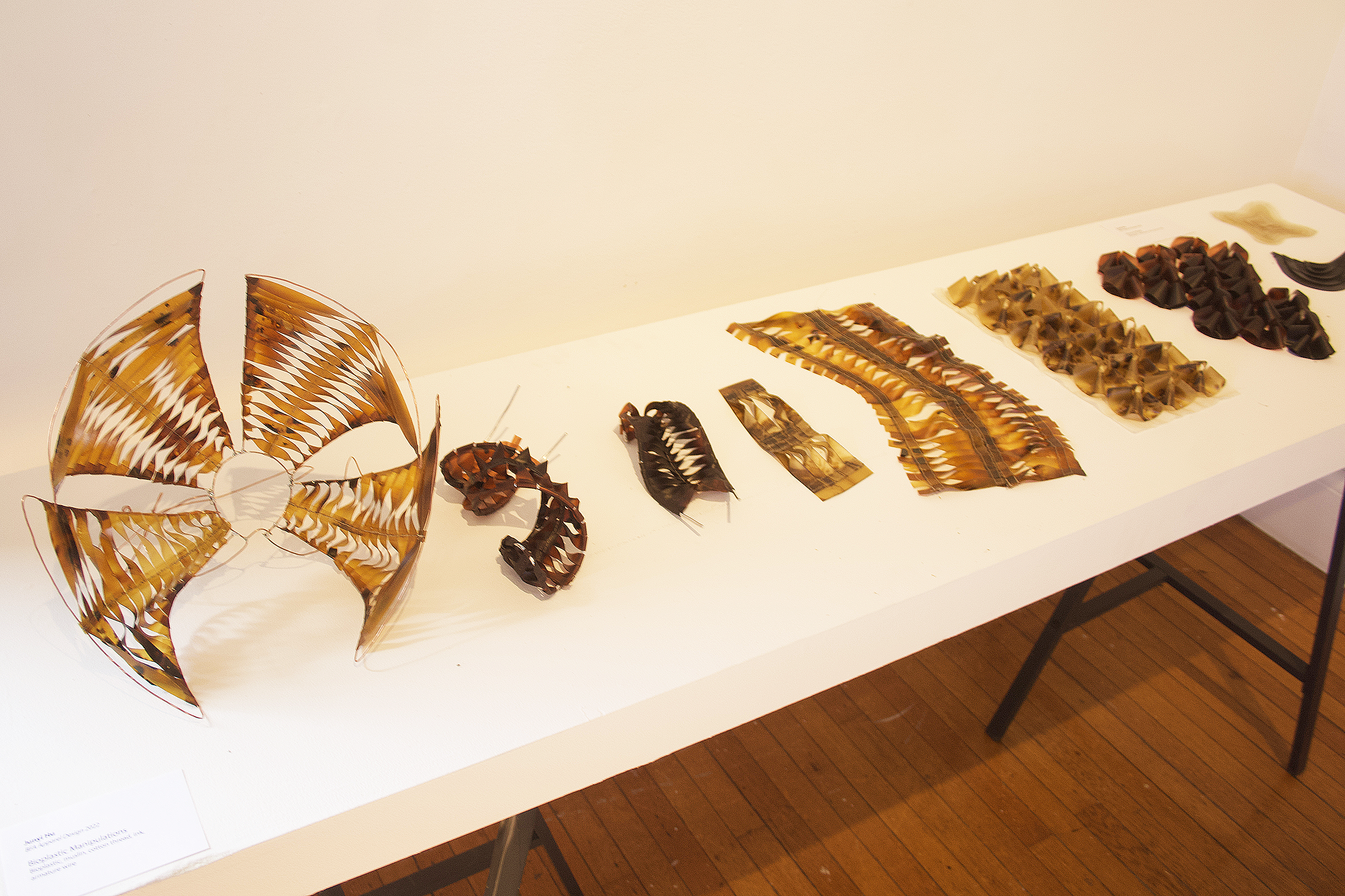
Michaelides presented her work in Woods-Gerry’s southwest gallery along with Jackie Oh 22 AP/FAV, Jessy Chun 22 AP and Clara Collins 22 AP, who also focus on the relationships wearers develop with their clothing over time. “Our section of the exhibition focuses on the stories embedded within the garments,” their exhibition statement notes. “[Our work is] a conscious act of recalibrating our consumerist tendencies, of reworking and reusing existing materials.”
“I was really hoping for a runway show,” Collins confesses, “but making a film will be really cool, and I’m excited to see my work finished and my ideas realized.”
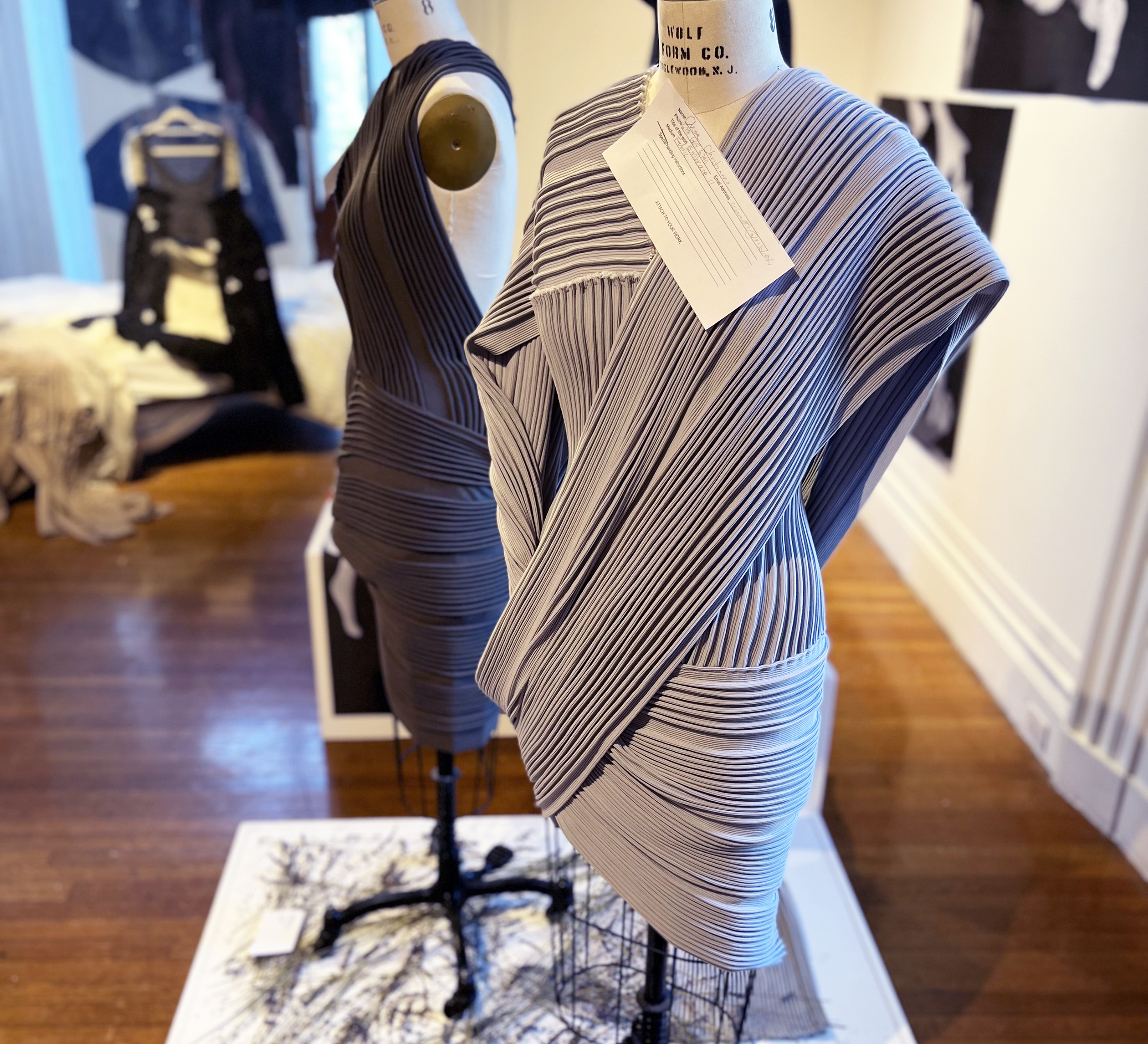
“My collection involves a lot of layering and intertwining. I’m trying to capture the emotions of a hug.”
Steve Kim 22 AP expressed his ideas about apparel design and its architectural foundations via Uncut, a section of the show that greeted visitors in the gallery’s entry. His work explores the mathematical concept of the “golden ratio” or Fibonacci sequence, which shows up in natural forms, such as daisies.
Another section of the Unfinished exhibition featured sneak peeks of nostalgic, layered looks by Esther Park 22 AP, ideas in organza from Kimberly Feng 22 AP, neutral knits in progress by Christianna Choe 22 AP and the makings of a complete vampire wardrobe as envisioned by Monserrat Fernandez-Moreno 22 AP.
“I’m not interested in dedicating my life to someone else’s brand and being thousands of miles away from my family.”
“I’m nonbinary and generally design clothes I would wear myself,” Fernandez-Moreno says. “I’m not sure what I want to do next year, but I want to keep working on the vampire narrative. I don’t think I’m quite done with it yet.”
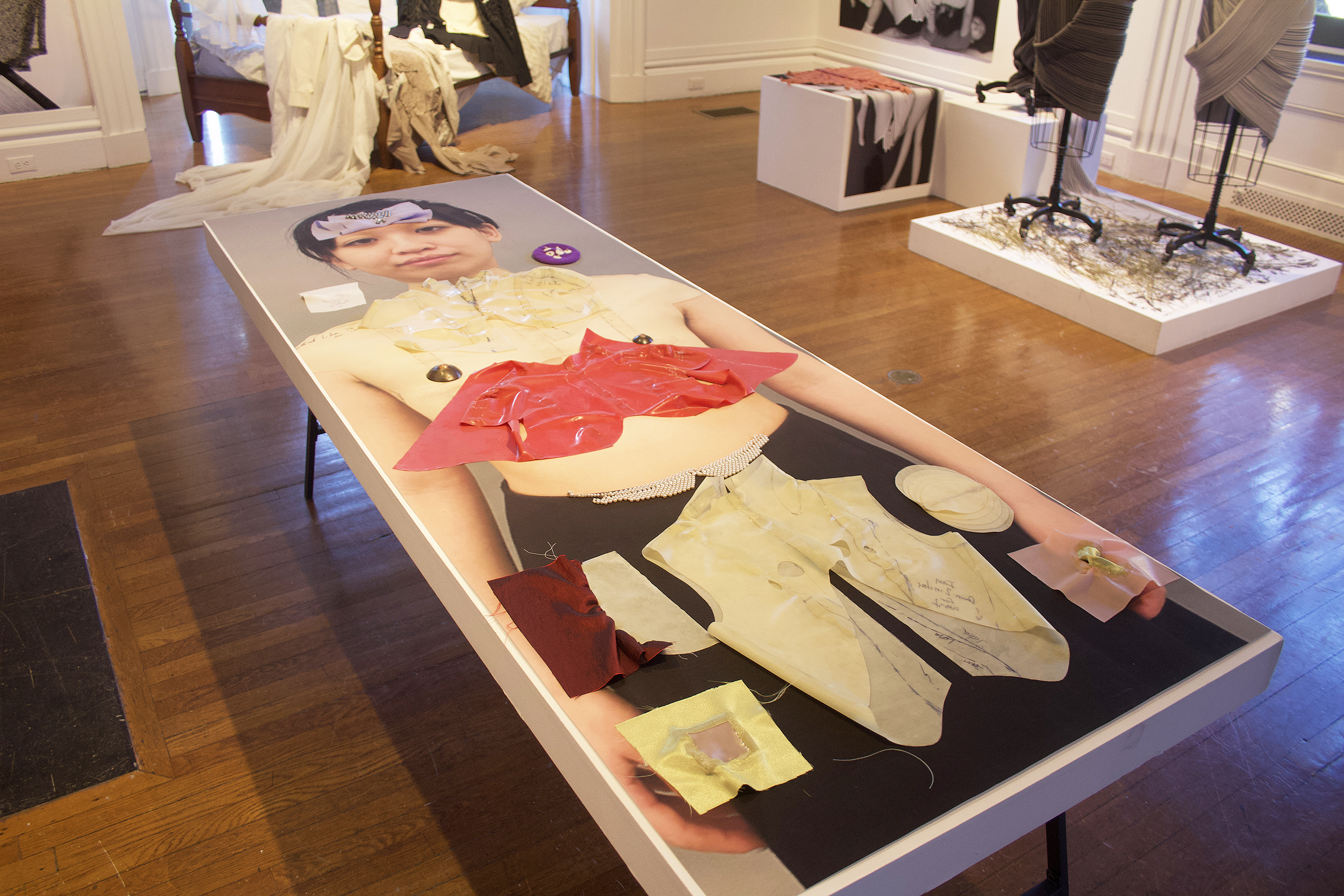
Choe’s looks were inspired by her sisters, whom she got really close with during COVID lockdown last year. “Social distancing was hard, and I found hugs so comforting and healing,” she says. “My collection involves a lot of layering and intertwining. I’m trying to capture the emotions of a hug.”
Perhaps the isolation Choe references explains the marked individuality in the work of this year’s Apparel Design seniors. The only common theme that seems to connect them is a shared wariness of the fashion industry and desire to forge their own paths after RISD.
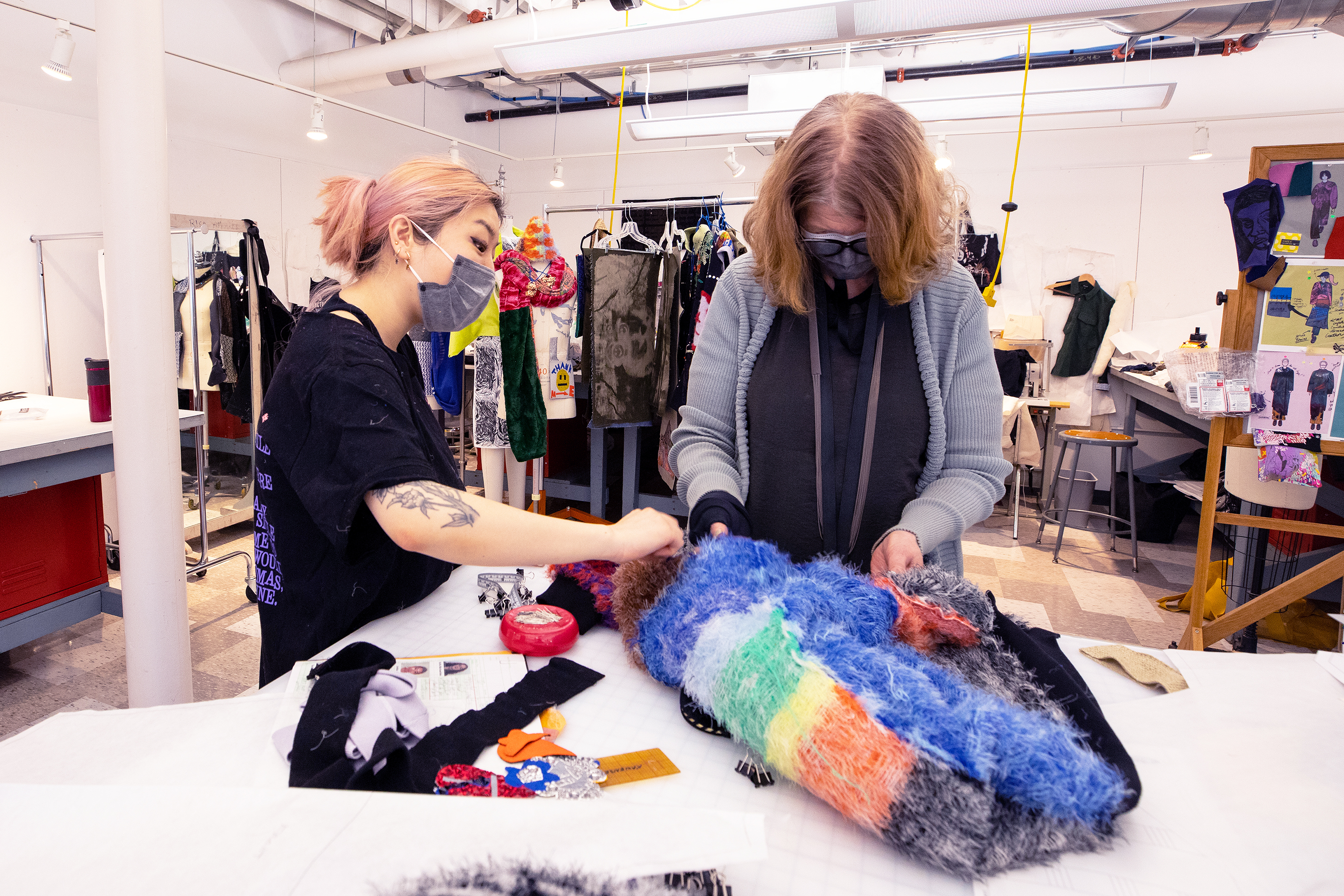
Double-major Oh, for example, intends to go to dental school and then join her father’s practice in Seattle. “I’m not interested in dedicating my life to someone else’s brand and being thousands of miles away from my family,” she says. “My dream is to make jewelry on the side and someday work on rapper A$AP Rocky’s teeth!”
—Simone Solondz / photos by Jo Sittenfeld MFA 08 PH, Isabel Roberts and Kevin Hughes MFA 08 JM
March 31, 2022
